Sexual Health Statistics 2024 By Health, Precautions and Dimensions
At Market.us Media, we strive to bring you the most accurate and up-to-date information by utilizing a variety of resources, including paid and free sources, primary research, and phone interviews. Our data is available to the public free of charge, and we encourage you to use it to inform your personal or business decisions. If you choose to republish our data on your own website, we simply ask that you provide a proper citation or link back to the respective page on Market.us Media. We appreciate your support and look forward to continuing to provide valuable insights for our audience.
Table of Contents
- Overview
- Editor’s Choice
- Worldwide Sexual Health Statistics
- STI (Sexually Transmitted Infection) Statistics
- Global HIV/AIDS Statistics
- Sexual Health Statistics by Age
- Contraception and Family Planning Statistics
- Sexual Behavior and Practices Statistics
- Sexual Orientation and Health Identity Statistics
- Fertility and Infertility Statistics
- Sexual Health and Gender-based Violence Statistics
- Sexual Health Education and Awareness Statistics
- Sexual Health Statistics by Country
- Recent Developments
- Wrap Up
- FAQs
Overview
Sexual Health Statistics: Sexual health is a fundamental aspect of overall well-being, encompassing physical, emotional, and social dimensions of human life.
Accurate and comprehensive sexual health statistics play a crucial role in understanding the prevalence of various conditions, tracking trends, and formulating effective public health policies and interventions.
These statistics offer insights into the prevalence of sexually transmitted infections (STIs), patterns of sexual behavior, contraception usage, reproductive health outcomes, and the challenges faced by different demographic groups.
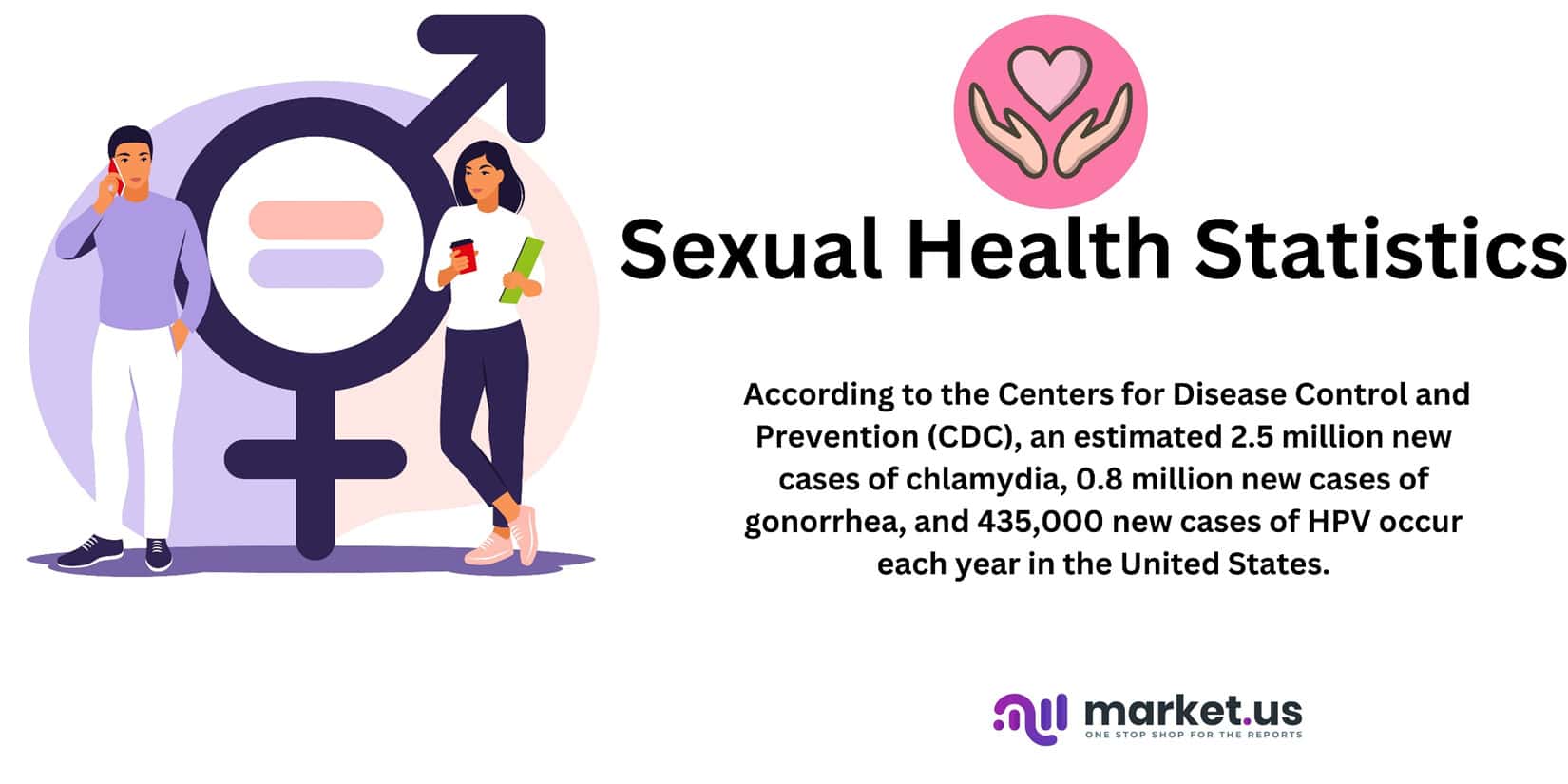
Editor’s Choice
- Sexually Transmitted Disease Market Size is expected to be worth around USD 171 Bn by 2032 from USD 95 Bn in 2022, growing at a CAGR of 6.17% during the forecast period from 2022 to 2032.
- STI Prevalence: Nearly 1 million STIs are acquired every day globally.
- Teenage Pregnancy: About 11% of births worldwide are to girls aged 15-19.
- HIV Infections: As of 2020, around 38 million people have HIV globally.
- Contraceptive Use: 64% of married or in-union women use contraception.
- Sexual Education: Only 34% of young people globally have comprehensive knowledge about HIV prevention.
- Gender-based Violence: 1 in 3 women worldwide experience physical or sexual violence.
- LGBTQ+ Discrimination: LGBTQ+ individuals face higher rates of mental health issues due to stigma.
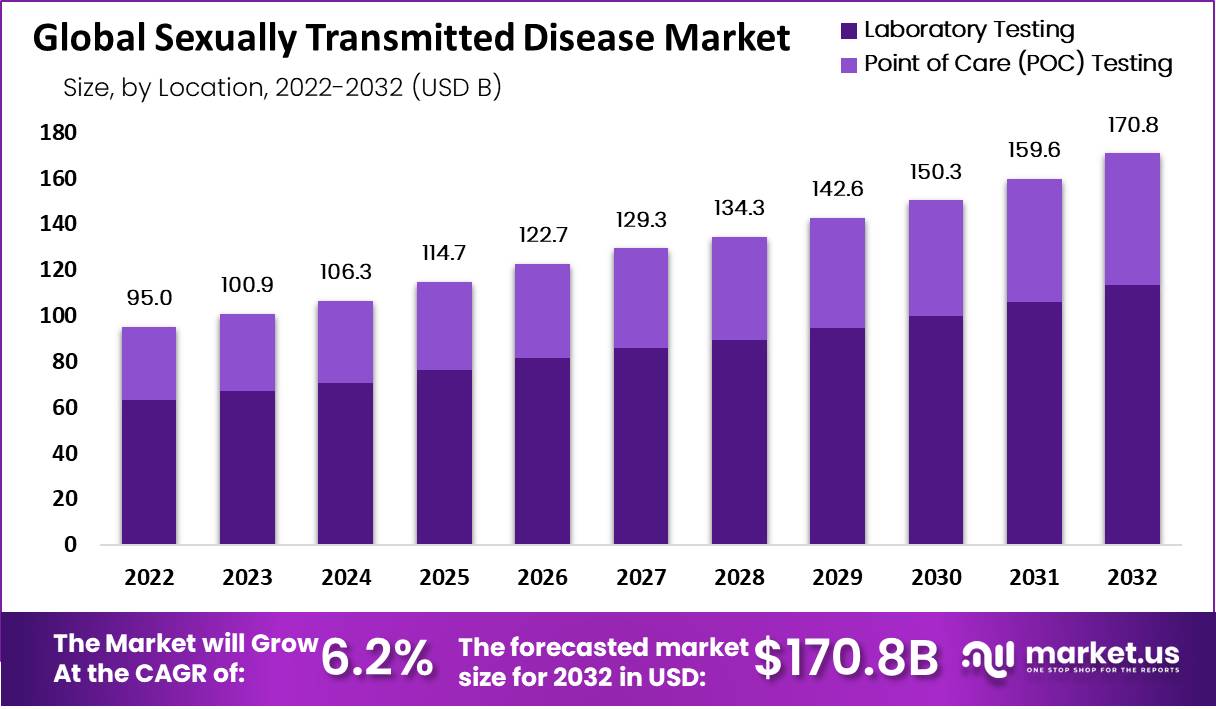
Worldwide Sexual Health Statistics
- STI Prevalence: Over 1 million STIs are acquired daily worldwide, with common infections like chlamydia, gonorrhea, and syphilis showing high incidence.
- HIV Impact: Approximately 38 million people are living with HIV globally, with around 1.5 million new infections annually.
- Contraceptive Use: About 57% of married or in-union women aged 15-49 globally use modern contraceptives, aiding in family planning and preventing unintended pregnancies.
- Teen Pregnancy: Every year, an estimated 12 million girls aged 15-19 give birth, often facing health risks and limited educational prospects.
- Comprehensive Sex Ed: Only about 36% of young people globally have access to comprehensive sex education, leaving many without essential information about safe practices.
- Unsafe Abortion: Worldwide, nearly 25 million unsafe abortions occur annually, contributing to maternal mortality and health complications.
- Gender-Based Violence: 1 in 3 women globally experiences physical or sexual intimate partner violence or non-partner sexual violence in their lifetime.
- LGBTQ+ Health Disparities: LGBTQ+ individuals face higher rates of mental health issues due to discrimination and stigma, impacting their overall well-being.
- Infertility Concerns: Approximately 10% of couples worldwide experience fertility challenges, leading to emotional distress and various treatments.
(Source: WHO, UNAIDS, Guttmacher Institute, UNFPA, UNESCO, The Trevor Project)

STI (Sexually Transmitted Infection) Statistics
- High Global Burden: Each year, an estimated 376 million new cases of curable STDs occur worldwide, including chlamydia, gonorrhea, syphilis, and trichomoniasis.
- Most Common STD: Chlamydia is the most frequently reported bacterial STD globally, with around 127 million new cases reported annually.
- Global Gonorrhea Prevalence: Approximately 87 million new cases of gonorrhea are recorded each year, making it a significant public health concern.
- Syphilis Impact: Syphilis affects over 6 million people annually, with an alarming rise in congenital syphilis cases impacting newborns.
- HPV Prevalence: Human papillomavirus (HPV) is the most common viral STD, with about 290 million women infected, leading to cervical cancer risk.
- STD-HIV Interaction: Individuals with STDs are at a higher risk of contracting and transmitting HIV, exacerbating the global HIV epidemic.
- Global Herpes Prevalence: About 491 million people aged 15-49 have herpes simplex virus (HSV) type 2 infection, causing genital herpes.
- Untreated Infections: Untreated STDs can lead to severe health complications, including infertility, ectopic pregnancies, and increased susceptibility to HIV.
- Youth Vulnerability: Adolescents and young adults are particularly susceptible to STDs due to biological, social, and behavioral factors. (Source: Guttmacher Institute)
- Healthcare Costs: The economic impact of STDs is substantial, including direct medical expenses, lost productivity, and expenses related to treating complications.
(Source: WHO, CDC)
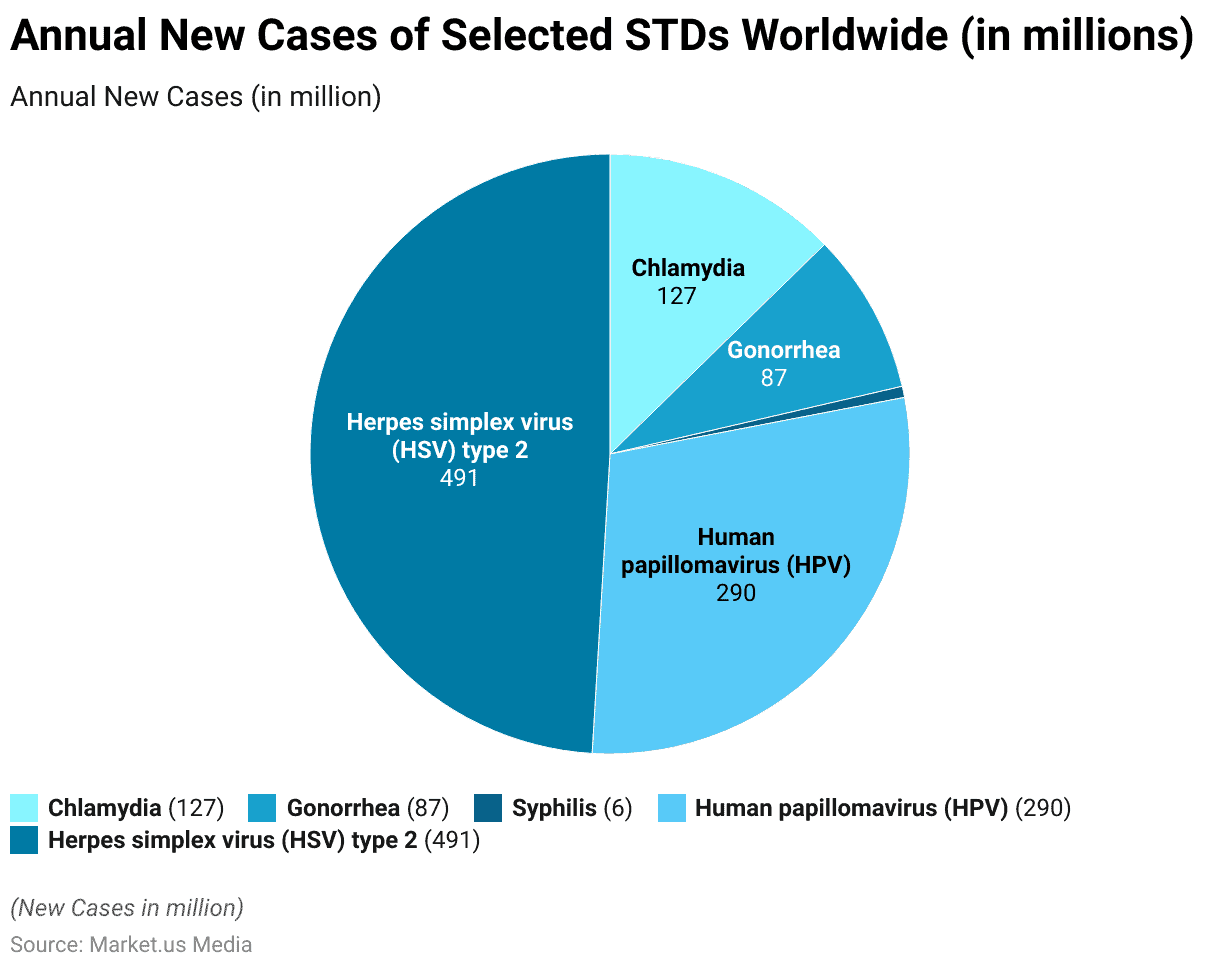
Global HIV/AIDS Statistics
- Global HIV Prevalence: An estimated 38 million people were living with HIV globally in 2020.
- New HIV Infections: There were around 1.5 million new HIV infections worldwide in 2020.
- HIV-related Deaths: Approximately 690,000 people died from AIDS-related illnesses in 2020.
- HIV Treatment: About 27.4 million people were receiving antiretroviral therapy (ART) for HIV/AIDS by mid-2021.
- Prevention Challenges: Key populations, including sex workers, men who have sex with men, and people who inject drugs, still face higher HIV infection rates due to stigma and limited access to healthcare.
- Mother-to-Child Transmission: Efforts to prevent mother-to-child transmission have made progress; in 2020, 85% of pregnant women living with HIV received antiretroviral therapy to prevent transmission to their babies.
- HIV in Sub-Saharan Africa: Sub-Saharan Africa remains the most affected region, accounting for over two-thirds of all people living with HIV globally.
- Youth and HIV: Young people (15-24 years) accounted for around 20% of all new HIV infections in 2020, highlighting the need for targeted prevention efforts.
- HIV Testing: Despite progress, around 27% of people with HIV globally are unaware of their status. Expanding access to testing is crucial for early treatment and prevention.
- Global Response: The global community has made significant strides, reducing new HIV infections by 23% since 2010. However, continued efforts are essential to achieve the goal of ending AIDS by 2030.
(Source: UNAIDS)

Sexual Health Statistics by Age
Adolescents (15-19 years):
- Around 12% of adolescents aged 15-19 have had sexual intercourse.
- Adolescents aged 15-19 account for nearly 25% of new HIV infections globally.
(Source: WHO, UNAIDS)
Young Adults (20-24 years):
- Over 60% of young adults have engaged in sexual intercourse by age 24.
- About 30% of new STI cases occur in young adults aged 20-24.
(Source: Guttmacher Institute, CDC)
Adults (25-49 years):
- In the 25-49 age group, approximately 70% of men and 60% of women have had sexual intercourse.
- The majority of new HIV infections occur among adults aged 25-49.
(Source: Kinsey Institute, UNAIDS)
Middle-Aged Adults (50-64 years):
- Over 50% of men and 40% of women aged 50-64 remain sexually active.
- A significant number of new cases of STIs are reported among middle-aged adults.
(Source: AARP, WHO)
Seniors (65+ years):
- Around 40% of seniors aged 65-80 report being sexually active.
- The prevalence of STIs is rising among seniors due to changing attitudes and medical advances.
(Source: National Poll on Healthy Aging, AARP)

Contraception and Family Planning Statistics
- Contraceptive Usage: About 64% of married or in-union women aged 15-49 globally use some form of contraception.
- Unmet Need: Approximately 12% of married or in-union women in developing regions have an unmet need for family planning services.
- Teenage Pregnancy: Each year, an estimated 21 million girls aged 15-19 in developing regions become pregnant, often due to limited access to contraception.
- Modern Methods: Modern contraceptive methods, such as pills, condoms, and IUDs, account for around 58% of all contraceptive use in developing regions.
- Access Barriers: Around 218 million women in low- and middle-income countries who want to avoid pregnancy are not using modern contraception due to various barriers.
- Regional Disparities: Contraceptive use varies widely by region, from about 42% in Africa to 73% in Europe among married or in-union women aged 15-49.
- Impact of Contraception: If all unmet needs for modern contraception were met, it could avert 67 million unintended pregnancies annually.
- Maternal Health: Increasing access to family planning and contraception can significantly reduce maternal deaths by preventing high-risk pregnancies.
- Gender Equality: Family planning empowers women to pursue education, careers, and personal goals, contributing to greater gender equality.
- Economic Benefits: Every dollar invested in family planning can yield $120 in savings on maternal and newborn health services in low- and middle-income countries.
(Source: World Bank, Guttmacher Institute, UNFPA, World Health Organization, United Nations)
Sexual Behavior and Practices Statistics
- Average Age of First Sexual Activity: Globally, the average age at which individuals engage in sexual activity for the first time is around 17 to 19 years old.
- Condom Usage Rates: In various regions, condom usage during sexual intercourse varies widely, with some countries reporting over 70% usage among sexually active individuals.
- Number of Sexual Partners: Research indicates that the average number of lifetime sexual partners for adults ranges from 4 to 10, depending on cultural and regional factors.
- Frequency of Sexual Activity: Studies suggest that adults engage in sexual activity an average of 1 to 2 times per week, but this can differ based on age, relationship status, and other factors.
- Shifts in Sexual Norms: Changing societal norms and attitudes have led to a decrease in the stigma associated with premarital and non-heteronormative sexual activity in many parts of the world.
- Online Sexual Behavior: With the rise of technology, approximately 40% to 60% of individuals have reported engaging in some form of online sexual behavior, including sexting and viewing explicit content.
- Adolescent Sexual Activity: Around the world, about 15% to 30% of adolescents report having had sexual intercourse before the age of 18, influenced by cultural, educational, and socio-economic factors.
- Marital and Relationship Satisfaction: Research indicates a positive correlation between sexual satisfaction and overall relationship happiness, highlighting the importance of communication and intimacy.
(Source: World Health Organization, United Nations Population Fund, National Center for Biotechnology Information, Kinsey Institute, Pew Research Center, Journal of Sexual Medicine, Archives of Sexual Behavior)
Sexual Orientation and Health Identity Statistics
- Globally, approximately 3.5% of adults identify as lesbian, gay, bisexual, or transgender (LGBT).
- In the United States, an estimated 5.6% of adults identify as LGBT.
- The prevalence of LGBT identification is higher among younger adults compared to older adults. For instance, in the United States, 7.3% of adults aged 18-24 identify as LGBT, while 4.2% of adults aged 65 and older do so.
- LGBT individuals have a higher likelihood of experiencing mental health issues than non-LGBT individuals. In the United States, 40% of LGBT adults had experienced a mental health condition in the past year, in contrast to 26% of non-LGBT adults.
- LGBT individuals are also more prone to experiencing sexual violence than their non-LGBT counterparts. For instance, 47% of transgender women in the United States have faced sexual assault during their lifetime, compared to 19% of cisgender women.
(Source: UNAIDS, CDC)
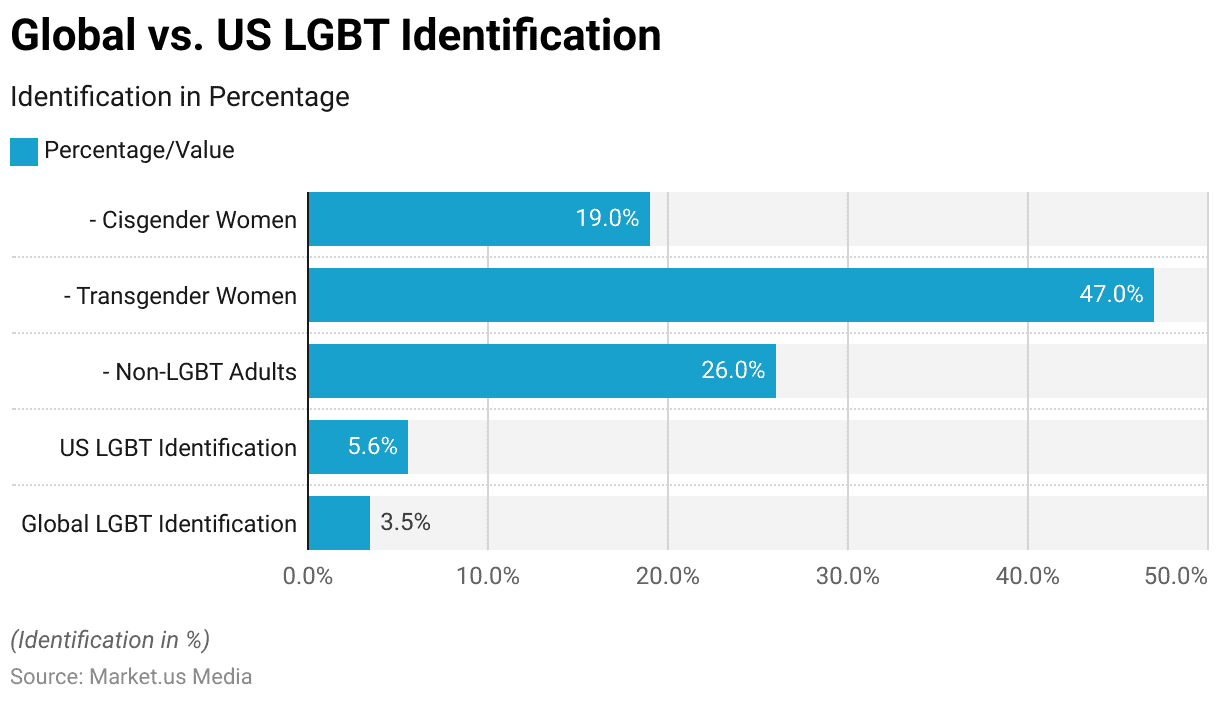
Fertility and Infertility Statistics
- Global Fertility Rate: The average number of children per woman globally is around 2.4.
- Infertility Prevalence: Approximately 10-15% of couples worldwide experience infertility.
- About 50% of infertility cases are due to female factors, 30% are due to male factors, and 20% are due to a combination of male and female factors.
- Age and Fertility: Female fertility significantly declines after the age of 35, with a sharper decline after 40.
- IVF Success Rate: The success rate of in vitro fertilization (IVF) varies by age, with rates ranging from 40-50% for women under 35 to around 10% for women over 40.
- Global Infertility Treatment: Around 1.5-2 billion people worldwide are affected by infertility or related conditions, necessitating access to effective treatment.
(Source: United Nations, World Population Prospects, World Health Organization, National Institute on Aging, Society for Assisted Reproductive Technology)
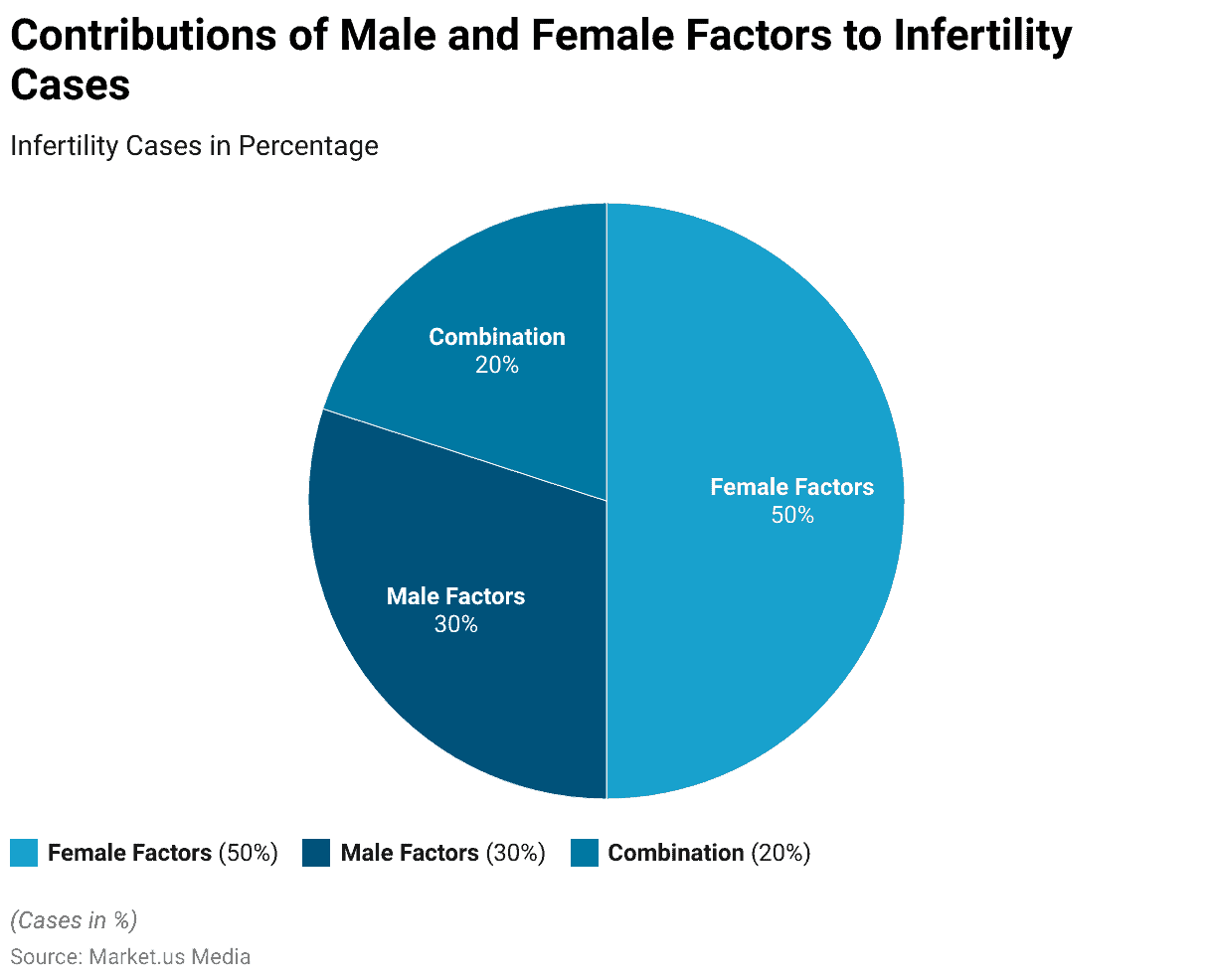
Sexual Health and Gender-based Violence Statistics
- STI Prevalence: Globally, an estimated 1 million STIs are acquired every day, with chlamydia, gonorrhea, syphilis, and trichomoniasis being the most common.
- Unintended Pregnancies: Around 45% of pregnancies worldwide are unintended, underscoring the need for accessible contraception and family planning services.
- Gender-based Violence: 1 in 3 women globally has experienced either physical or sexual intimate partner violence or non-partner sexual violence in their lifetime.
- Child Marriage: Approximately 12 million girls under 18 are married each year, exposing them to potential sexual health risks and early pregnancies.
- Adolescent Births: Every year, an estimated 15 million girls aged 15 to 19 and 777,000 girls under 15 give birth, with higher risks of complications.
- Female Genital Mutilation (FGM): Over 200 million girls and women alive today have undergone FGM, leading to serious health consequences and complications.
(Source: World Health Organization, Guttmacher Institute, Girls Not Brides, United Nations Population Fund, UNICEF)

Sexual Health Education and Awareness Statistics
- Comprehensive Sex Education Impact: Countries with comprehensive sex education programs report reductions in teenage pregnancy rates by up to 50%.
- Knowledge Gaps Among Youth: Around 41% of young people aged 15-24 globally lack knowledge about effective contraceptive methods and their proper usage.
- Access to Sexual Education: Only about half of the countries worldwide have policies in place that support comprehensive sex education in schools.
- LGBTQ+ Inclusive Education: Less than 10% of countries include information on LGBTQ+ relationships and sexual health in their curricula.
- Internet and Sexual Information: 78% of teenagers report using the internet to seek sexual health information, but not all sources are accurate or reliable.
- Role of Parents: Over 90% of adolescents believe that parents should play a role in their sexual education, emphasizing the importance of family discussions.
- Youth-Friendly Services: Only around 30% of young people feel that they have access to healthcare services that address their sexual health needs adequately.
- Abstinence-Only Programs Impact: Studies suggest that abstinence-only education programs do not delay sexual initiation or prevent risky behaviors effectively.
- Contraception Awareness: In some regions, only 30% of young women have accurate knowledge about contraceptive methods and their use.
(Source: Guttmacher Institute, UNFPA, UNESCO, IPPF, Advocates for Youth, Planned Parenthood, UNFPA, The National Campaign to Prevent Teen and Unplanned Pregnancy)
Sexual Health Statistics by Country
South Africa
- HIV Prevalence: South Africa has one of the highest HIV prevalence rates globally, with about 20.4% of adults aged 15-49 living with HIV.
- Teenage Pregnancy Rate: The teenage pregnancy rate is 67 per 1,000 girls aged 15-19.
- Condom Usage: Only 60% of sexually active young women aged 15-24 reported using condoms consistently.
- STI Incidence: South Africa has a high incidence of STIs, with approximately 2.6 million new cases of chlamydia reported annually.
- Sexual Education: Less than half of schools in South Africa provide comprehensive sexual education.
India
- Unsafe Abortions: An estimated 10 women per hour undergo unsafe abortions due to limited access to safe and legal abortion services.
- Reproductive Health Services: Around 60% of married women in India lack access to modern contraception methods.
- Gender-Based Violence: Over 30% of ever-married women have experienced physical or sexual violence by their partners.
- Early Marriage: About 27% of women in India are married before the age of 18.
- Awareness of HIV: Only 38% of young women have comprehensive knowledge about HIV prevention.
United States
- Teen Birth Rate: The teenage birth rate in the US is 17.4 births per 1,000 girls aged 15-19.
- STI Rates: The US has the highest rates of gonorrhea and chlamydia among high-income countries, with millions of new cases reported annually.
- LGBTQ+ Health Disparities: LGBTQ+ youth are at higher risk for mental health challenges and substance use compared to their heterosexual counterparts.
- Comprehensive Sex Education: Less than half of US states require schools to provide comprehensive sex education.
- Access to Contraception: Approximately 19 million women in the US lack access to affordable contraceptive services.
Brazil
- Teenage Pregnancy: Brazil has a teenage birth rate of 54.6 births per 1,000 girls aged 15-19.
- Abortion Restrictions: Brazil has strict abortion laws, and unsafe abortions contribute to maternal mortality and health risks.
- HIV Incidence: Brazil has a relatively high rate of new HIV infections, with over 41,000 new cases reported annually.
- Gender Inequality: Gender-based violence affects a significant portion of Brazilian women, impacting their sexual and reproductive health.
- Condom Use: Condom usage rates among young people are relatively low, contributing to the spread of STIs.
Nigeria
- Family Planning: Only about 15% of married women in Nigeria use modern contraception methods.
- Maternal Mortality: Nigeria has one of the highest maternal mortality rates globally, partly due to limited access to quality reproductive healthcare.
- FGM/C: Female genital mutilation/cutting (FGM/C) affects a significant portion of Nigerian women, impacting their sexual health and well-being.
- Early Marriage: Approximately 17% of women in Nigeria are married before the age of 15.
- HIV Awareness: Knowledge of HIV prevention methods is low among young people, contributing to high infection rates.
(Source: UNAIDS, World Bank, Guttmacher Institute, World Health Organization, Human Sciences Research Council, Lancet, National Family Health Survey, UNICEF, Girls Not Brides, CDC, The Trevor Project, Guttmacher Institute, World Population Review, Brazilian Ministry of Health, National Population Commission)
Recent Developments
Acquisitions and Mergers:
- Acquisition of a leading sexual health clinic chain by a healthcare conglomerate in September 2023, expanding its footprint in the sexual health services market.
- The merger between two sexual wellness product manufacturers in December 2023, combined their expertise to offer a wider range of products and reach a broader customer base.
New Product Launches:
- Introduction of next-generation contraceptive devices with advanced features, such as longer duration of effectiveness and reduced side effects, by pharmaceutical companies in January 2024.
- Launch of innovative sexual health apps providing educational resources, remote consultations with healthcare providers, and discreet access to sexual wellness products in March 2024.
Funding Rounds:
- Series C funding round for a sexual health startup specializing in HIV prevention and testing in February 2024, raising $40 million to expand its reach and develop new preventive solutions.
- Seed funding for a sexual wellness subscription service in April 2024, securing $8 million to enhance their platform and product offerings.
Partnerships and Collaborations:
- Collaboration between a sexual health clinic and a telemedicine platform in November 2023 to provide remote consultations and prescriptions for sexually transmitted infection (STI) testing and treatment.
- The partnership between a sexual health nonprofit organization and a social media platform in March 2024 to launch educational campaigns and promote sexual health awareness among young adults.
Regulatory Developments:
- Implementation of regulations governing the marketing and sale of sexual wellness products, ensuring product safety, efficacy, and accurate labeling.
- Introduction of guidelines for sexual health education in schools and communities by government health agencies, aiming to promote healthy sexual behaviors and prevent STIs and unplanned pregnancies.
Investment Landscape:
- Venture capital investments in sexual health startups totaled $2.5 billion in 2023, with a focus on companies offering innovative solutions for STI prevention, contraception, and sexual wellness.
- Strategic acquisitions and partnerships between healthcare providers, technology companies, and sexual wellness brands accounted for 50% of total investment activity in the sexual health market in 2023, reflecting industry collaboration and efforts to address sexual health needs comprehensively.
Wrap Up
Sexual Health Statistics – Prioritizing and maintaining good sexual health is essential for overall well-being and quality of life.
Open communication, practicing safe sex, regular screenings, and seeking professional guidance when needed are all crucial aspects of a proactive approach to sexual health.
By taking these steps, individuals can enjoy fulfilling and satisfying sexual lives while minimizing the risks of sexually transmitted infections and other related health issues.
Remember, a holistic focus on sexual health contributes not only to physical health but also to emotional and relational happiness.
FAQs
The most common STIs in the United States are chlamydia, gonorrhea, and human papillomavirus (HPV). According to the Centers for Disease Control and Prevention (CDC), an estimated 2.5 million new cases of chlamydia, 0.8 million new cases of gonorrhea, and 435,000 new cases of HPV occur each year in the United States.
– Pain or burning during urination
– Vaginal discharge or bleeding
– Genital warts
– Painful sores or blisters in the genital area
– Abnormal discharge from the penis
– Fever, chills, and fatigue
About 58% of married or in-union women of reproductive age worldwide were using some form of contraception.
Here are some hotlines that can help:
– The National Sexual Assault Hotline: 1-800-656-HOPE
– The Planned Parenthood Hotline: 1-800-230-PLAN
– The CDC Sexually Transmitted Disease Hotline: 1-800-232-4636
The WHO estimated that about 1 in 3 women (30%) worldwide have been subjected to physical and/or sexual intimate partner violence or non-partner sexual violence in their lifetime.
Sources.

Trishita Deb
Trishita has more than 7 years of experience in market research and consulting industry. She has worked in various domains including healthcare, consumer goods, and materials. Her expertise lies majorly in healthcare and has worked on more than 400 healthcare reports throughout her career.
Latest from Author
- Health and Wellness Market Will hit USD 8,379 Billion Over Next Decade
- Organic Packaged Food Statistics 2024 By Packaging, Ingredients, Benefits
- Health Insurance Sector to Experience Robust Growth Over Next Decade
- 3D Bioprinting To Lead the Next Wave Of Healthcare Innovations In The Future
- Biopharmaceuticals Market Will Reach USD 566 Billion by 2032